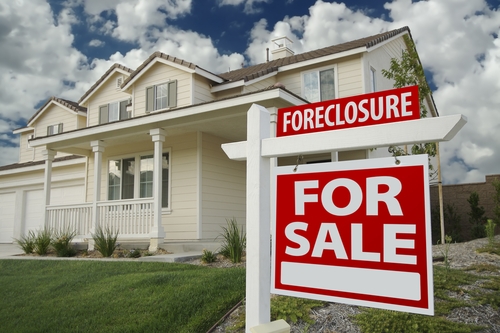How neighbors affect a home valuation
 Although homeowners likely know the fixtures and exteriors of their houses impact their value, they may not be aware of how strongly neighboring properties influence buyers and appraisers. Professional appraisers compare homes to similar properties in their surrounding areas. Even though appraisers are there to evaluate one property, they are sure to notice if the next door neighbor’s yard is unkempt or the house is falling down. In past few years you could drive down streets in almost any city in the U.S. and find multiple REO properties for sale on the same block.
Although homeowners likely know the fixtures and exteriors of their houses impact their value, they may not be aware of how strongly neighboring properties influence buyers and appraisers. Professional appraisers compare homes to similar properties in their surrounding areas. Even though appraisers are there to evaluate one property, they are sure to notice if the next door neighbor’s yard is unkempt or the house is falling down. In past few years you could drive down streets in almost any city in the U.S. and find multiple REO properties for sale on the same block.
How do bad neighbors impact a home’s value?
The Appraisal Institute (AI) cautioned that a home’s proximity to a bad neighbor can reduce the property’s value by 5-10 percent. What constitutes a bad neighbor? Both maintenance and behavioral factors, such as overgrown lawns, clutter, multiple cars parked off the driveway, fallen tree branches, loud music or pets and poorly maintained home exteriors of neighboring properties can negatively affect appraisals. Valuation professionals refer to bad neighbors or other nearby negative influences as external obsolescence, which means depreciation in value caused by factors that are not on the property. Economic or geographic factors may affect external obsolescence, and it can be temporary or permanent. No matter the cause, the homeowner will be hard-pressed to fix external obsolescence.
While some issues may not be apparent during an appraisal walkthrough, appraisers view some factors as obtrusive depending on the location. For example, clutter will be more noticeable in communities with smaller yards. Because of variation by region, appraisers need to have a strong knowledge of the geographical market, as they must provide justification for any examples of external obsolescence.
Location matters a great deal
Many homebuyers consider the surrounding community when selecting a new home. Although people want to find stylish and comfortable homes, choosing a property in a safe neighborhood is far more important to most buyers, according to Bob Vila. In addition to safety, logistics matter for a home’s value. Real estate prices, school rankings, vibrancy, commute times, access to public transit and cleanliness all influence valuations.
The factor with the highest potential to have a negative impact on valuation is early foreclosures in the area. The Federal Reserve Bank of Atlanta found foreclosures cause the fastest and most significant decrease of local property values. In addition, many homeowners stop investing in their homes immediately before a foreclosure, which can lead to a derelict appearance. Fortunately for owners who are looking to sell or refinance their homes, the negative effects of a foreclosure disappear after the home has been owned and occupied by a new owner for one year.
What can homeowners do about bad neighbors?
According to the Appraisal Institute, homeowners who are concerned about neighboring properties and are preparing for an appraisal should research any subdivision restrictions, condo association rules or any other applicable regulations requiring property maintenance covenants. Owners may be able to talk to bad neighbors before an appraisal to resolve potential issues, such as unkempt front yards. This action may generate a faster result than writing an official complaint about a nuisance. While qualified appraisers will be well-informed of the surrounding area, homeowners can help by providing information on the community.
See more at…https://www.forsytheappraisals.com/2015/may/258-how-neighbors-affect-a-home-valuation